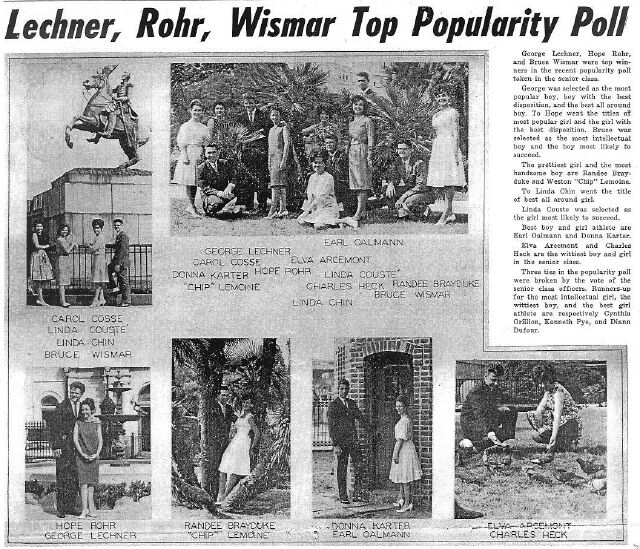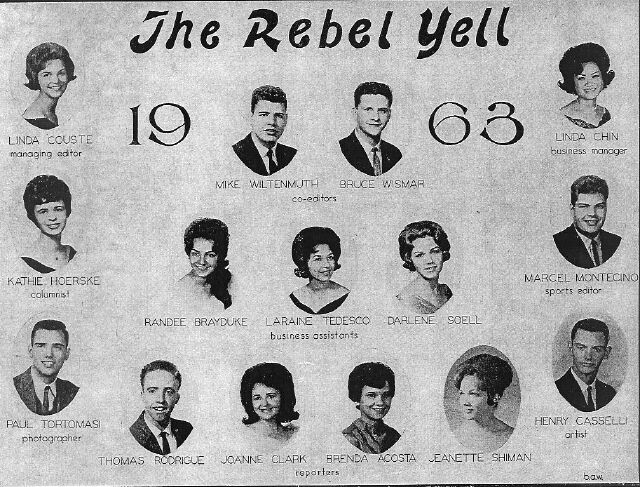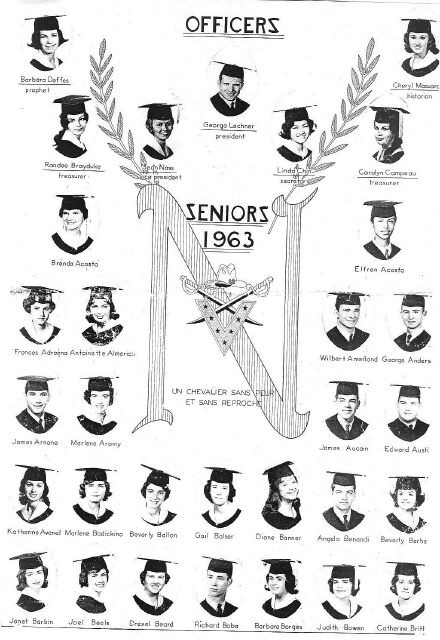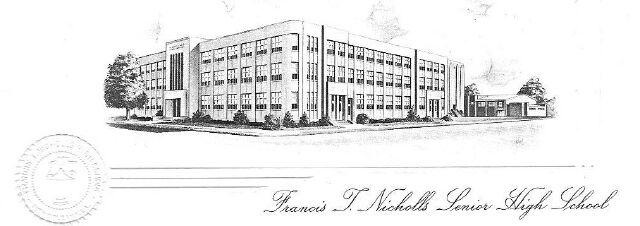

| Francis T. Nicholls High School Class of 1963 |

| (Depending on your browser, left-clicking on the images below should enlarge them.) Seniors, Last Names B - D Seniors, Last Names D - G Seniors, Last Names G - K Seniors, Last Names K - M Seniors, Last Names M - R Seniors, Last Names R - S Seniors, Last Names S - Z |
| The 1963 graduating class of Francis T. Nicholls High School is shown in the pictures below from the school newspaper, The Rebel Yell. Since the images are large, I've placed only a few on the page, with individual links to the rest. A brief history of the school can be found at the bottom of the page. I'm so appreciative to Larie Tedesco for sharing these images with us! Larie's picture is in the first image below. |
| From Larie's autograph book: Fight Song Swing into the line and shine with Nicholls, The Rebel crew of the Blue and Gray, We're going to hit the line for Nicholls, So clear the road, we're on our way, We're on our way! Imprinted on the leaves of history, A name that stands for hard, fair play, We're gong to fight, fight, fight for victory, We're coming through for the Blue and Gray. Y-E-A!!! Alma Mater Mid the Blue and mid the Gray, Our Alma Mater stands, Up on high our banners fly. Held by a thousand hands. Blue and Gray to you each day We pledge our loyalty and say, Carry on forever more, The honored Blue and Gray. |
| Norm Hellmers has published a picture of the 1959-1960 Nicholls Band. You can find it here. Website for Nicholls Class of 1960 Back to Old New Orleans Index The Past Whispers - Home |
| On January 29, 1940, Francis T. Nicholls High School opened at 3820 St. Claude Avenue, named after Francis Tillou Nicholls, who was governor of Louisiana from 1877-80 and Chief Justice of the Supreme Court of Louisiana from 1888-92. It continued to bear his name until the mid-1990's, when the name was changed to Frederick Douglass High School. From 1880 until 1939, another school, McDonogh No. 12, stood on that block; it was demolished to make way for Nicholls. The land on which the school stands was once a part of the Louis Barthelemy Macarty plantation. After Macarty's death in 1846, John McDonogh bought the plantation and bequeathed it to the city of New Orleans, along with other properties and a large sum of money to be used for public schools in the city. In 1859, an article in The Daily Picayune stated that the part of the McDonogh estate that had once belonged to Macarty had been sold at auction, after reserving an area for a public square and a school. There was an article in The Daily Crescent, titled "The Dismemberment of the Macarty Plantation," which read in part, "It is some comfort to know, however, that a large part of the plantation is to be reserved for a public square..." |
| If you have trouble reading the images above, just save them to your computer (right-click & choose 'save picture as') and then use your computer's viewer/reader to magnify them. |
